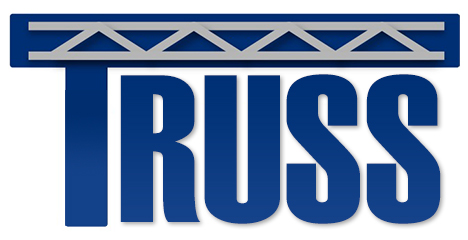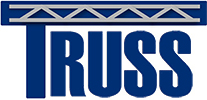 Early Stage Researcher
Early Stage ResearcherUniversitat Politècnica de Catalunya (Spain)
Project 10: Assessment of bridge condition and safety based on measured vibration level
Research Interests:
Structural dynamics; Structural health monitoring; Vibration control of structures; Finite element analysis; Bridge condition assessment; Data and signal processing
Biography:
JJ Moughty completed his undergraduate studies in civil engineering in Galway Mayo Institute of Technology and National University of Ireland Galway before receiving a M.Sc. in structural & geotechnical engineering from Trinity College Dublin. While at Trinity, he was the recipient of the Robert Friel award for his research into vibration control of wind turbine blades, in addition to receiving the best overall student award in the same year.
Since graduating, JJ has worked in the offshore oil and gas industry for Wood Group Kenny where he specialised in the design and analysis of deep water drilling systems for semi-submersible vessels and drillships. His particular focus on fatigue of subsea wellheads led him to complete projects for some of the largest companies in the oil and gas industry such as BP, Total, Saipem and Shell. He joined TRUSS ITN in October 2015. A summary of his research highlights and training, dissemination and outreach activities in TRUSS other than network-wide events, is provided in the pdf below, followed by more detailed info on his research outputs.
Research Outputs:
Publications in TRUSS
Journal papers
Traditionally, damage identification techniques in bridges have focused on monitoring changes to modal-based Damage Sensitive Features (DSFs) due to their direct relationship with structural stiffness and their spatial information content. However, their progression to real-world applications has not been without its challenges and shortcomings, mainly stemming from: (1) environmental and operational variations; (2) inefficient utilization of machine learning algorithms for damage detection; and (3) a general over-reliance on modal-based DSFs alone. The present paper provides an in-depth review of the development of modal-based DSFs and a synopsis of the challenges they face. The paper then sets out to addresses the highlighted challenges in terms of published advancements and alternatives from recent literature. [DOI] -> Link to full text in repository
Overtime, the structural condition of bridges tends to decline due to a number of degradation processes, such as creep, corrosion and cyclic loading, among others. Considerable research has been conducted over the years to assess and monitor the rate of such degradation with the aim of reducing structural uncertainty. Traditionally, vibration-based damage detection techniques in bridges have focused on monitoring changes to modal parameters and subsequently comparing them to numerical models. These traditional techniques are generally time consuming and can often mistake changing environmental and operational conditions as structural damage. Recent research has seen the emergence of more advanced computational techniques that not only allow the assessment of noisier and more complex data, but also allow research to veer away from monitoring changes in modal parameters alone. This paper presents a review of the current state-of-the-art developments in vibration-based damage detection in small to medium span bridges with particular focus on the utilization of advanced computational methods that avoid traditional damage detection pitfalls. A case study of the S101 Bridge is also presented to test the damage sensitivity a chosen methodology. [DOI] -> Link to full text in repository
Conference contributions
This paper reports on recent contributions by the Marie Skłodowska-Curie Innovative Training Network titled TRUSS (Training in Reducing Uncertainty of Structural Safety) to the field of structural safety in rail and road bridges (http://trussitn.eu). In TRUSS, uncertainty in bridge safety is addressed via cost-efficient structural performance monitoring and fault diagnostics methods including: (1) the use of the rotation response due to the traffic traversing a bridge and weigh-in-motion concepts as damage indicator, (2) the combination of design parameters in probabilistic context for geometrical and material properties, traffic data and assumption on level of deterioration to evaluate bridge safety (via Bayesian updating and a damage indicator based on real-time measurement), (3) the application of a fuzzy classification technique via feature selection extracted using empirical mode decomposition to detect failure, and (4) the testing of alternative vibration-based damage sensitive features other than modal parameters. Progress has also been made in improving modern technologies based on optical fiber distributed sensing, and sensors mounted on instrumented terrestrial and on aerial vehicles, in order to gather more accurate and efficient info about the structure. More specifically, the following aspects have been covered: (a) the spatial resolution and strain accuracy obtained with optical distributed fiber when applied to concrete elements as well as the ideal adhesive, and the potential for detecting crack or abnormal deflections without failure or debonding, (b) the possibility of using the high-resolution measurement capabilities of the Traffic Speed Deflectometer for bridge monitoring purposes and, (c) the acquisition of bridge details and defects via unmanned aerial vehicles. -> Link to full text in repository
Over the years, there have been numerous efforts by researchers in quantifying structural degradation and damage from vibration measurements. Traditionally, damage detection techniques in bridges have focused on the use of modal-based damage indicators, such as frequencies, mode shapes and mode shape derivatives. However, these parameters have been shown to be sensitive to environmental and operational variations and can be difficult to accurately extract under low-level ambient excitation. Recent research has found a correlation between certain vibration parameters, such as vibration intensity, and a group of damage bridges, suggesting that vibration parameters may detect damage if extracted correctly. The present study furthers these findings by examining a number of vibration parameters as damage indicators to discern their sensitivity to various condition states of a progressively damaged bridge under ambient excitation. [DOI] -> Link to full text in repository
The assessment of bridge condition from vibration measurements has generally been determined via the monitoring of modal parameters determined though adaptations of the standard Fast Fourier Transform (FFT) or other stationary time-series based transformations. However, the non-stationary nature of measured vibration signals from damaged structures can limit the quality of frequency content information estimated by such methods. The Hilbert–Huang Transform’s (HHT) ability to decompose non-stationary measured vibration data into a time-frequency-energy representation allows signal variations to be identified sooner than other stationary-based transformations, thus potentially allowing early detection of damage. The present study uses data obtained from a progressive damage test conducted on a real bridge subjected to excitation from a double axle passing vehicle as a test subject. Decomposed vibration signals from the HHT and associated marginal spectrums are assessed to determine structural condition for various damage states and different locations along the bridge. [DOI] -> Link to full text in repository
Overtime, the structural condition of bridges tends to decline due to a number of degradation processes, such as; creep, corrosion and cyclic loading, among others. Considerable research has been conducted over the years to assess and monitor the rate of such degradation with the aim of reducing structural uncertainty. Traditionally, vibration-based damage detection techniques in bridges have focused on monitoring changes to modal parameters and subsequently comparing them to numerical models. These traditional techniques are generally time consuming and can often mistake changing environmental and operational conditions as structural damage. Recent research has seen the emergence of more advanced computational techniques that not only allow the assessment of noisier and more complex data, but also allow research to veer away from monitoring changes in modal parameters alone. This paper presents a review of the current state-of-the-art developments in vibration based damage detection in small to medium span bridges with particular focus on the utilization of advanced computational methods that avoid traditional damage detection pitfalls. A case study of the S101 Bridge is also presented to test the damage sensitivity a chosen methodology. Finally, in the evaluation of the shear crack pattern, not only crack initiation and location are of importance, but also crack width, shear crack angles and shear sliding displacements along the cracks have to be measured to evaluate the shear performance of a structural element. -> External link to full text -> Link to full text in repository
Overtime, the structural condition of bridges tends to decline due to a number of degradation processes, such as; creep, corrosion and cyclic loading, among others. Considerable research has been conducted over the years to assess and monitor the rate of such degradation with the aim of reducing structural uncertainty. Traditionally, damage detection techniques in bridges have focused on monitoring changes to modal parameters and subsequently comparing them to numerical models. These traditional techniques are generally time consuming and can often mistake changing environmental and operational conditions as structural damage. Recent research has seen the emergence of more advanced computational techniques that not only allow the assessment of noisier and more complex data, but also allow research to veer away from monitoring changes in modal parameters alone. This paper presents a review of the current state-of-the-art developments in vibration-based damage detection in small to medium span bridges with particular focus on the utilisation of advanced computational methods, such as machine learning, pattern recognition and advanced data normalisation algorithms. -> Link to full text in repository
Over the years, there have been numerous efforts by researchers in quantifying structural performance and damage from vibration measurements. Curves proposed by several authors (Koch 1953, Steffens 1974) attempt to relate acceleration spectrums to damage level, which were determined based on experimental surveys conducted on buildings. The technique is focused on the use of vibration intensity, which is a function of acceleration amplitude and frequency, as a parameter to discern damage. Recently, some Codes have adopted vibration intensity criteria for evaluating damage, such as the Brazilian Code for non-destructive testing ABNT-NBR-15307 (2005), which reproduces Koch’s criteria for any kind of structure, including bridges. It states that vibration intensity is an empiric parameter used to estimate damage levels in structures, and can be expressed in units known as vibrars. According to the Brazilian Code, there exists an empirical relationship between the values of vibrars and the level of structural damage: 10-30 (None), 30-40 (Small), 40-50 (Severe) and 50-60 (Failure) (ABNT,2005).
The present work investigates the use of vibrars and maximum peak-to-peak accelerations as parameters of damage and performance evaluation in existing bridges and also as a way to predict long-term performance during the initial design stage. To achieve this, a database of the most common Brazil-ian bridge types was analyzed, whose structural design and dynamic parameters are known. Measured traffic data and material properties were integrated into calibrated FEA models and a fatigue assessment was conducted.
A damage index compiled by Kim et al. (2005) was used to assess damage based on dynamic property variation and the general structural condition of the bridges, observed during detailed inspections. Measured vibration was subsequently assessed against the damage index and an additional reliability index to assess the bridges’ fatigue safety. This resulted in a clear correlation between maximum peak-to-peak accelerations and the indices; however, vibration intensity, measured in vibrars as suggested by ABNT-NBR-15307 (2005), did not produce good correlation with the indices. Not only worse correlation was observed in the case of vibrars, but also a tendency of damage decreasing with increasing vibrars, which is not reasonable. As a final result, from the observed correlations, limits of maximum peak-to-peak acceleration are proposed to be considered in existing and newly designed bridges to certify an acceptable long-term condition and safety against fatigue effects. -> Link to full text in repository
References.-
Associacao Brasileira de Normas Tecnicas – ABNT 2005. Ensaios não destrutivos – Provas de cargas dinâmicas em grandes estruturas – Procedimento. NBR 15307.
Kim, T.H., Lee, K.M., Chung, Y.S. & Shin, H.M. 2005. Seismic damage assessment of reinforced concrete bridge columns. Engineering Structures. Vol.27, No.11, pp 576-592.
Koch, H.W. 1953. Determining the effects of vibration in buildings, V.D.I.Z., Vol. 25, N. 21, pp. 744-747.
Steffens, R.J. 1974. Structural vibration and damage. – Building Research Establishment. London.

















